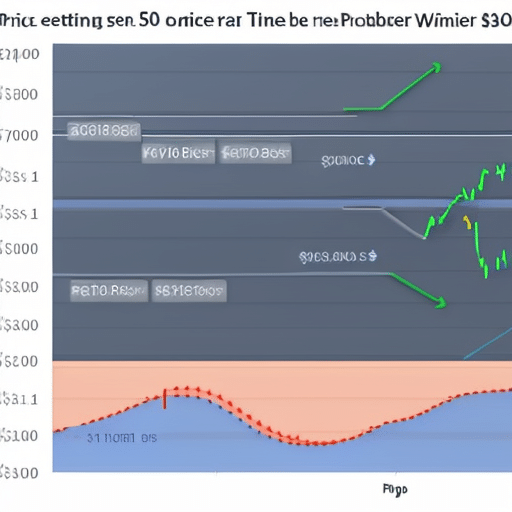Evaluating Defi Projects
The decentralized finance (DeFi) sector has grown significantly in recent years, presenting investors with the opportunity to access new and innovative financial products. Evaluating DeFi projects is of paramount importance to ensure that investments are made with due diligence and a rigorous approach. This article outlines an evaluation framework for DeFi projects which includes researching the technology behind the project, analyzing the team and advisors, assessing use cases, understanding competitive landscape and risk factors as well as researching a project’s reputation and evaluating financials.
By following this evaluation framework, investors can make informed decisions when considering investing in a particular DeFI project. Furthermore, it provides insight into how different aspects of DeFI projects should be analyzed before committing capital. The remainder of this article will discuss each step in detail so that investors can have a thorough understanding of evaluating DeFi projects.
Research the Technology Behind the Project
Evaluating the technology behind a defi project can be challenging, yet fascinating for those seeking to understand how the project works. It is essential to consider both protocol security and token utility. Protocol security should be evaluated by looking into the measures taken by the project team to ensure that their blockchain or smart contract code is secure from malicious actors. Token utility refers to assessing whether or not the underlying token serves an important purpose within the project’s protocol. This could include analyzing things like liquidity mining incentives, governance functions, and other economic design features of the tokens themselves. A thorough analysis of these two areas can provide valuable insights into how robust a particular defi protocol may be in practice. Additionally, understanding these components will help identify any potential vulnerabilities that may exist in the system’s architecture and codebase. After evaluating these aspects of a defi projects technology base, it is time to move on to analyzing its team and advisors.
Analyze the Team and Advisors
Assessing the team and advisors of a DeFi project is an essential part of evaluating its viability. It is important to understand the backgrounds and skill sets of each individual involved in the project, as well as their commitment to it. The quality of a project’s team and advisors can be determined by considering factors such as their past success with similar projects, experience in the blockchain space, and level of community engagement. Token economics should also be reviewed, including token distribution models, vesting periods for team tokens, incentives for users or investors, etc. An analysis of these factors allows investors to gain insight into how dedicated the project’s founders are to its success and whether they have created a viable economic model that will benefit all stakeholders. In conclusion, thorough research on the backgrounds and commitments of the project’s team members and advisors enables investors to make more informed decisions when assessing a DeFi venture. This transition seamlessly leads into examining use cases for determining if there is real value being created by the protocol itself.
Assess the Use Cases
Examining the use cases of a DeFi protocol is essential for assessing its potential value. In order to evaluate the impact of such a platform, it is important to explore how different users will use it and why they would choose to do so. This requires an analysis of what features are offered by the protocol, how easy it is to access these features, and how beneficial they can be for users. Additionally, it is necessary to consider what other applications may offer similar services that could compete with the DeFi protocol in question. By evaluating these use cases, one can gain insight into whether or not the project has potential value and if there is a market for its services.
In this way, exploring the various use cases of a DeFi protocol provides valuable insight into its potential success or failure in terms of user adoption and market demand. This information can help inform decisions about whether or not to invest in such projects. The next step in assessing the viability of such projects is to analyze the competitive landscape in which they exist.
Analyze the Competitive Landscape
The competitive landscape of the DeFi market is an essential topic for analysis. To accurately assess the market and its projects, it is important to identify key competitors and compare their offerings. Additionally, examining broader trends in the industry can provide further insight into potential opportunities as well as risks. Through this analysis, a better understanding of the current state of the DeFi market can be achieved.
Identify Key Competitors
Analyzing the DeFi space provides an opportunity to identify key competitors and understand their respective advantages. By examining each project’s value proposition and understanding its tokenomics, one can gain insight into the various offerings of these projects in comparison to others in the same sector. This analysis can lead to a greater understanding of which projects are likely to be most successful and competitive in the long run. Through this process, key competitors will become evident as some projects will offer more attractive features than others. A comprehensive analysis of the competitive landscape helps investors make informed decisions when it comes to allocating capital towards DeFi projects. With this knowledge, individuals can decide which projects best meet their needs and have an edge over other protocols in terms of user adoption, product innovation, or liquidity. As such, it is essential for those looking to participate in DeFi ecosystems to identify major players that could potentially disrupt existing protocols or create new opportunities within the industry.
Compare Different Projects
Comparing the various protocols in the DeFi space can help investors understand which projects may be most competitive and successful in the long run. For example, it has been estimated that MakerDAO holds approximately 60% of all stablecoin deposits in DeFi applications. Exploring alternatives to MakerDAO and evaluating their benefits is essential to understanding how they stack up against each other. Comparing different projects requires assessing both their features and performance on a range of criteria, such as security, liquidity, scalability, governance structure, and cost effectiveness. By examining these factors in detail, investors can gain insight into which project may offer the best long-term returns. With an ever-evolving market landscape, analyzing market trends is crucial for identifying opportunities for growth or potential risks associated with investing in DeFi applications.
Analyze the Market Trends
Examining the effects of market changes on the performance of DeFi applications is essential for investors to identify potential opportunities and risks. Market trends can be analyzed in two main ways:
-
Network Implications: Looking at network data such as the number of nodes, transaction volumes, and token economics can help reveal underlying trends in the DeFi space. Analyzing these metrics can provide insight into how a particular project is performing relative to its peers. By looking at the differences between networks, investors can spot market trends that could have an impact on their investments.
-
Token Economics: Examining token prices and trading activity provides another way to analyze market trends. By analyzing price movements over time, investors can get an idea about whether a particular project is undervalued or overvalued relative to other projects in the same category. Additionally, understanding how tokens are being used within a network may give insights into potential future developments and their implications for investment decisions.
Analyzing market trends helps investors understand both current conditions and long-term predictions related to DeFi projects, allowing them to make informed decisions about their investments. Understanding these risk factors associated with investing in DeFi projects will be discussed in greater detail in the following section.
Understand the Risk Factors
Exploring the risk factors associated with Defi projects can be compared to traversing a minefield, with each step requiring extensive caution. Examining the incentives of the project is one way to evaluate potential risks, as monetary gains are often an indication of the project’s success. This should be done in conjunction with exploring liquidity and security measures, as any discrepancies here could indicate a lack of commitment from developers and investors. Comparing these two aspects can help determine whether or not a specific Defi project is worth investing in. Moreover, researching the project’s reputation by looking at user reviews and analyzing its performance on various metrics is also important to understand whether or not it will be successful in the long run. Ultimately, assessing all available data points related to Defi projects is essential before making an informed decision on investment.
Research the Project’s Reputation
Assessing the project’s reputation by looking at user reviews and analyzing its performance on various metrics can provide a reliable indication of its potential success in the long run. It is important to assess how well the project is received by users, as this could be indicative of the product’s value proposition and overall adoption rate. Additionally, regulatory oversight should be taken into account, as any legal issues or bans may affect public opinion and token economics negatively. Furthermore, research on the team behind the project can show whether they have adequate experience to deliver on their promises. Lastly, another factor to consider is liquidity: examining whether there are enough buyers and sellers available for trading in order to maintain consistent market values for tokens associated with projects. By conducting thorough research and evaluating these factors accordingly, one can obtain an accurate assessment of a Defi projects’ reputation before investing. To gain a full understanding of a Defi project’s financial stability prior to investing, it is also necessary to evaluate its financials extensively.
Evaluate the Financials
In order to accurately assess a Defi project’s financial stability prior to investing, it is necessary to consider a range of factors, including liquidity, regulatory oversight, and the team behind the project. A comprehensive evaluation should include cost projections and tokenomics analysis as these provide insight into the project’s long-term sustainability. Cost projections can be examined through analyzing market data from similar projects or by using investment models such as discounted cash flow (DCF). Tokenomics analysis helps evaluate how well token economics are designed in terms of incentives for users and investors to participate in the network. Additionally, there may be other elements that must be taken into account such as legal compliance with applicable regulations. Ultimately, an investor must ensure that the capital they invest will be secure and have good potential returns based on their research findings.





 Bitcoin
Bitcoin  Ethereum
Ethereum  Tether
Tether  XRP
XRP  Wrapped SOL
Wrapped SOL  USDC
USDC  Lido Staked Ether
Lido Staked Ether  TRON
TRON  Dogecoin
Dogecoin  Cardano
Cardano  Figure Heloc
Figure Heloc  Bitcoin Cash
Bitcoin Cash  Wrapped stETH
Wrapped stETH  WhiteBIT Coin
WhiteBIT Coin  Wrapped Bitcoin
Wrapped Bitcoin  Wrapped eETH
Wrapped eETH  USDS
USDS  Chainlink
Chainlink  Binance Bridged USDT (BNB Smart Chain)
Binance Bridged USDT (BNB Smart Chain)  LEO Token
LEO Token  WETH
WETH  Zcash
Zcash  Monero
Monero  Stellar
Stellar  Coinbase Wrapped BTC
Coinbase Wrapped BTC  Sui
Sui  Litecoin
Litecoin  Ethena USDe
Ethena USDe  Hyperliquid
Hyperliquid  Avalanche
Avalanche  Shiba Inu
Shiba Inu  Canton
Canton  Hedera
Hedera  World Liberty Financial
World Liberty Financial  sUSDS
sUSDS  Toncoin
Toncoin  USDT0
USDT0  Dai
Dai  Cronos
Cronos  Uniswap
Uniswap  PayPal USD
PayPal USD  Polkadot
Polkadot  Mantle
Mantle  Ethena Staked USDe
Ethena Staked USDe  USD1
USD1  Pepe
Pepe  Rain
Rain  MemeCore
MemeCore